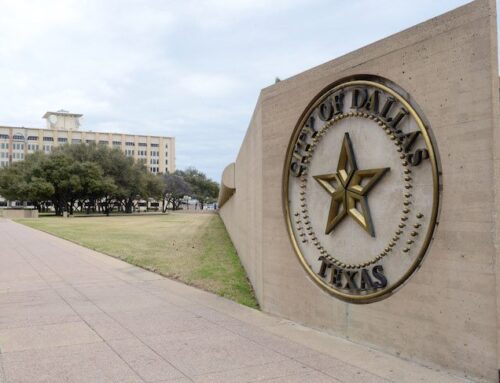
Two trolley cars that once transported passengers across Dallas lie rotting in a storage yard, tucked out of sight behind a warehouse. The decomposing hunks accumulate rust as they sit stagnant in harsh weather conditions.
The forgotten artifacts are a cautionary tale for members of the Junius Heights Historic District, who are working to save a piece of neighborhood history by finding a new home for the trolley at the Spaghetti Warehouse. The eatery permanently closed its Dallas location in October, and the iconic streetcar faces an uncertain future.
The Texas-based Italian restaurant is known for streetcar seating inside warehouses that are located next to tracks where trolleys once passed during the late 1800s and 1900s. Founded in 1972, the chain has dwindled to just seven locations in three states.
“Our goal is that the trolley would continue to exist,” says Junius Heights board member Matt Wood. “We don’t want it torn down or cut up.”
The Junius Heights trolley at the Spaghetti Warehouse is a special piece of neighborhood history. In 1906, the streetcar contributed to the development of Junius Heights as people rode it to reach land being settled on the east side of Dallas. Today, Junius Heights has one of the largest collections of historic homes built in the Craftsman, Prairie and Tudor styles.
Not only was the streetcar a boon for business and real estate development, it provided new ways for people to meet and form relationships. Junius Heights neighbor Mary Carroll credits the trolley for her more than 60-year marriage to husband Robert Carroll.
The couple started dating in the early 1950s after Mary met Robert at a military base in Grand Prairie. Every Friday for five years, Robert would hitch a ride downtown and take the trolley to Junius Heights to visit Mary. He would catch the last train back on Sunday night and ride back to the base with a friend. The routine worked perfectly until one night when he fell asleep, missed his stop downtown and woke up at the end of the line in Oak Cliff.
“If it hadn’t been for the streetcar, we probably wouldn’t have been together,” Mary says. “There would have been no way for him to see me because we didn’t have cars.”
Every year, the Carrolls and their Junius Heights neighbors celebrated the streetcar and the history of the community with drinks and dinner in the trolley at the Spaghetti Warehouse. When they heard the restaurant was closing, they tried to return the icon to the neighborhood or relocate it to a new home where it could be preserved.
There was talk of moving it to the Lakewood Shopping Center or a neighborhood pocket park, but those plans never materialized, says Rene Schmidt, president of the Junius Heights Historic District.
“We do want it back in East Dallas because it’s one of our icons,” Schmidt says. “It’s well preserved and in good condition. The woodwork inside is incredible.”
In late October, the trolley sold at an auction of Spaghetti Warehouse items for $3,125 to Bidder #23941. Under the terms of the auction, the bidder is responsible for removing the trolley from the restaurant. That will require the partial removal and rebuilding of a brick wall, making the final price much higher.
After assessing the cost, the winning bidder, who was not identified, decided to forego the streetcar’s removal.
DBL Brands, which owns the Spaghetti Warehouse chain, plans to leave the streetcar in the building, project manager Hwan Pak says. The trolley then becomes the responsibility of the property owner, Vereit, which did not respond to numerous requests for comment.
As the streetcar continues to languish in the empty building, Junius Heights Historic District members are still looking to partner with individuals or organizations interested in repurposing the trolley. Collaboration could come in the form of a monetary donation or a public relations campaign, Wood says.
“We’re not in a position to pay for all of it, and we don’t have a final destination for it, but we’re eager to partner with anybody and leverage our status as a neighborhood association,” he says. “They’d have the eternal gratitude of the largest historic district in Texas.”





